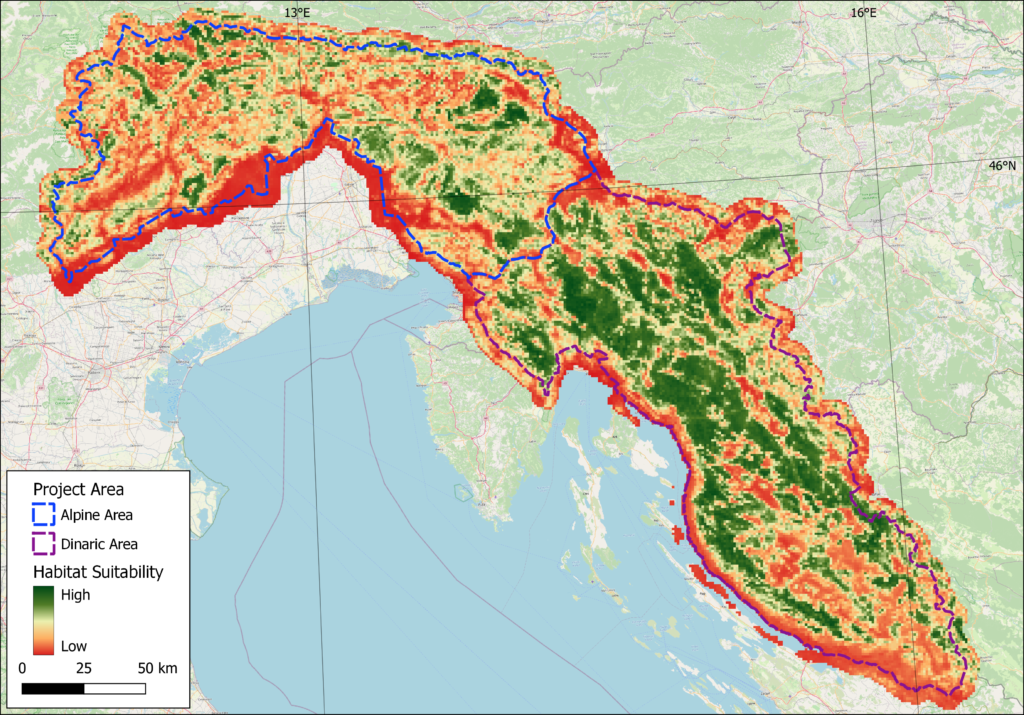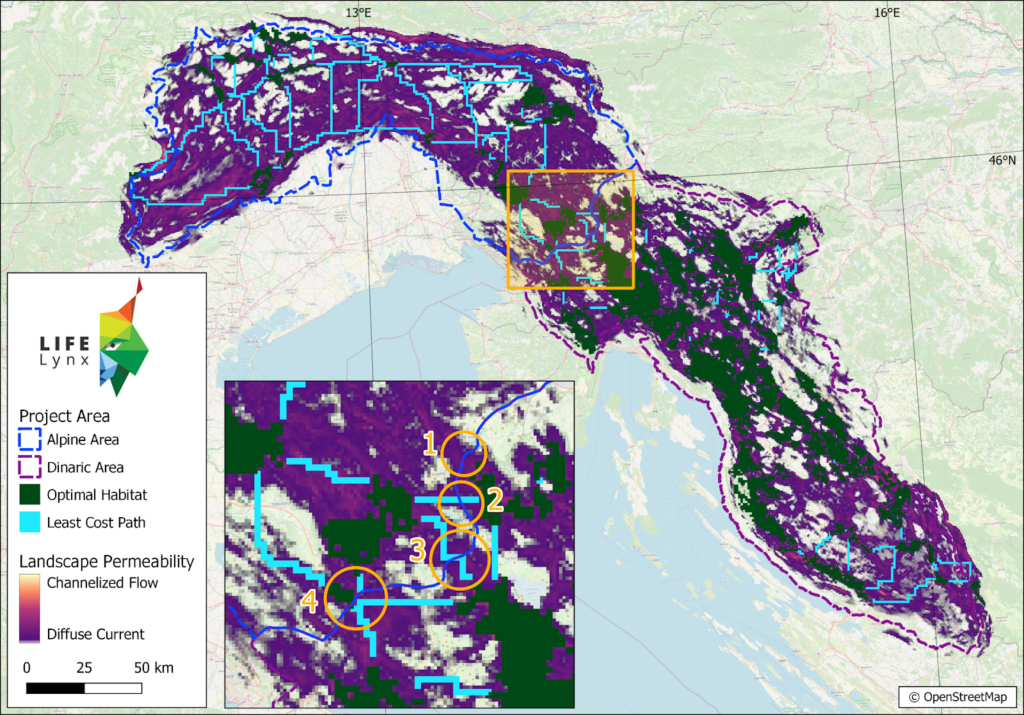LIFE Lynx project partners from the Biotechnical Faculty (UL) have produced the report titled “Habitat suitability and connectivity models for lynx between and within the Southeastern Alps and Dinaric Mountains area”. They have addressed several research questions: (1) Where is suitable (and optimal) habitat for lynx? (2) How permeable is the landscape of the project area for lynx? (3) How (well) connected are habitat patches? (4) How (well) connected are the Dinaric and SE Alps study areas?

Fig 1. Habitat Suitability Map. Green shades indicate suitable habitat while red shades indicate less favourable and unsuitable habitat. Model prediction renders forest complexes of the Dinarics as highly suitable habitat for lynx, while suitable habitat in the Alps is scarce and mostly limited to forested mountain plateaus.
To answer these questions, they built a habitat suitability model (Fig 1) and delineated patches of optimal and suitable habitat. Using a circuit theory approach, they also created a landscape permeability map and calculated least cost paths between optimal habitat patches (Fig 2).

Fig 2. Map shows landscape permeability overlaid with optimal habitat patches and least cost paths amongst the patches. The purple colour indicates diffuse permeability, which in practice means that an animal can move through space unhindered. In some areas, however, the passage is highly channelized (pink and yellow shades), which means that the lynx has little opportunity to take an alternative route. Cases where such bottlenecks are crossed by linear barriers (e.g. motorway, railway) are particularly problematic, as such barriers can be virtually impassable for the lynx. The inset map shows that Ljubljana-Koper highway crosses four potential corridors, first being the Vrhnika-Logatec section, second Logatec-Unec, third Unec-Postojna and fourthPostojna-Divača section. Areas with impeded permeability were made transparent for clarity.
The results show that the Dinaric part of the project area hosts a large amount of suitable and optimal habitats, which are also well connected. The optimal habitat patches in the Alpine area seem to be scarcer and farther apart, which emphasises the importance of good connectivity amongst habitat patches. The connectivity of Alpine and Dinaric parts is strongly intercepted by the Ljubljana – Koper highway, which in some sections (e.g. Unec – Postojna) creates an almost impassable barrier to movement for lynx (and other large carnivores).
